Blooms, posies, blossom, and gardens will never go out of style
About a year ago, somewhere on social media, I made the rather stupid observation that I thought flowers had become nonstarters as subjects for artists since the heyday of Georgia O’Keeffe. Elisabeth Condon was the first to set me straight with a reminder of her many lush and gorgeous paintings that incorporate blooms (and I should have known better because I included several of these in my profile of her).
With gardens everywhere at their most magnificent, I wondered how many others were devoting serious attention to the language of flowers. Some I could remember immediately; others turned up after an open call on social media. Their approaches range from sharp-focus photography to digital prints hot off the computer to the traditional mediums of paint, pastel, and pencil.
Flowers have a long and venerable tradition in art history, going all the way back to ancient Egypt, when the lotus blossom stood in as a symbol for the sun. Medieval and Renaissance artists often assigned specific meanings to flowers (the nosegay in The Venus of Urbino, for instance, is a symbol of love—maybe setting the standard for Valentine’s Day ever after). Even after tulip speculation in Holland bankrupted many, the Dutch mania for floral still lifes abated not a whit. And of course we all know about van Gogh and his passion for irises and sunflowers.
Even if a rose is now just a rose is a rose (unless it’s Duchamp as Rrose Sélavy), artists are still irresistibly drawn to flowers. So here’s Part One of a bouquet made up of the many ways Vasari21 members pay homage to Mother Nature’s spectacular gifts.
Elisabeth Condon: “My mother’s 1970s flower wallpapers and fabrics felt claustrophobic growing up, but I now embrace the chance to redefine them. The flowers are ‘found,’ metaphorically downloaded from the wallpaper into the paintings. And as such, they can be treated as a sequence of marks and color shapes, or abstract elements. A fabric or wallpaper pattern repeats, forming a kind of grid, which I liken to New York’s urban layout. My deeper purpose is to loosen it and by extension the monotonous controls of power and patriarchy that undermine freedom and life.”
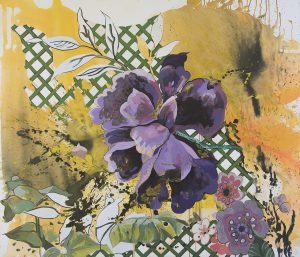
Pavilion of Spring and Summer: Into the Garden Spring (2017),acrylic and ink on linen, 54 x 63 inches
Jonathan Morse: “I use flowers as stand-ins for our fragmenting organic selves, clashing with our digital, climate-changed futures.”
Marcie Begleiter: “Flowers are thought of as sexy or romantic, but they are sinister and other-worldly as well. Dark tunnels and dripping surfaces lead to powdery stamens and pockets of hidden tendrils. Look closely, and the flora take on the appearance of fauna, moving mysteriously through a wilderness of grass and bush. Look closely, and the dark side is revealed.”
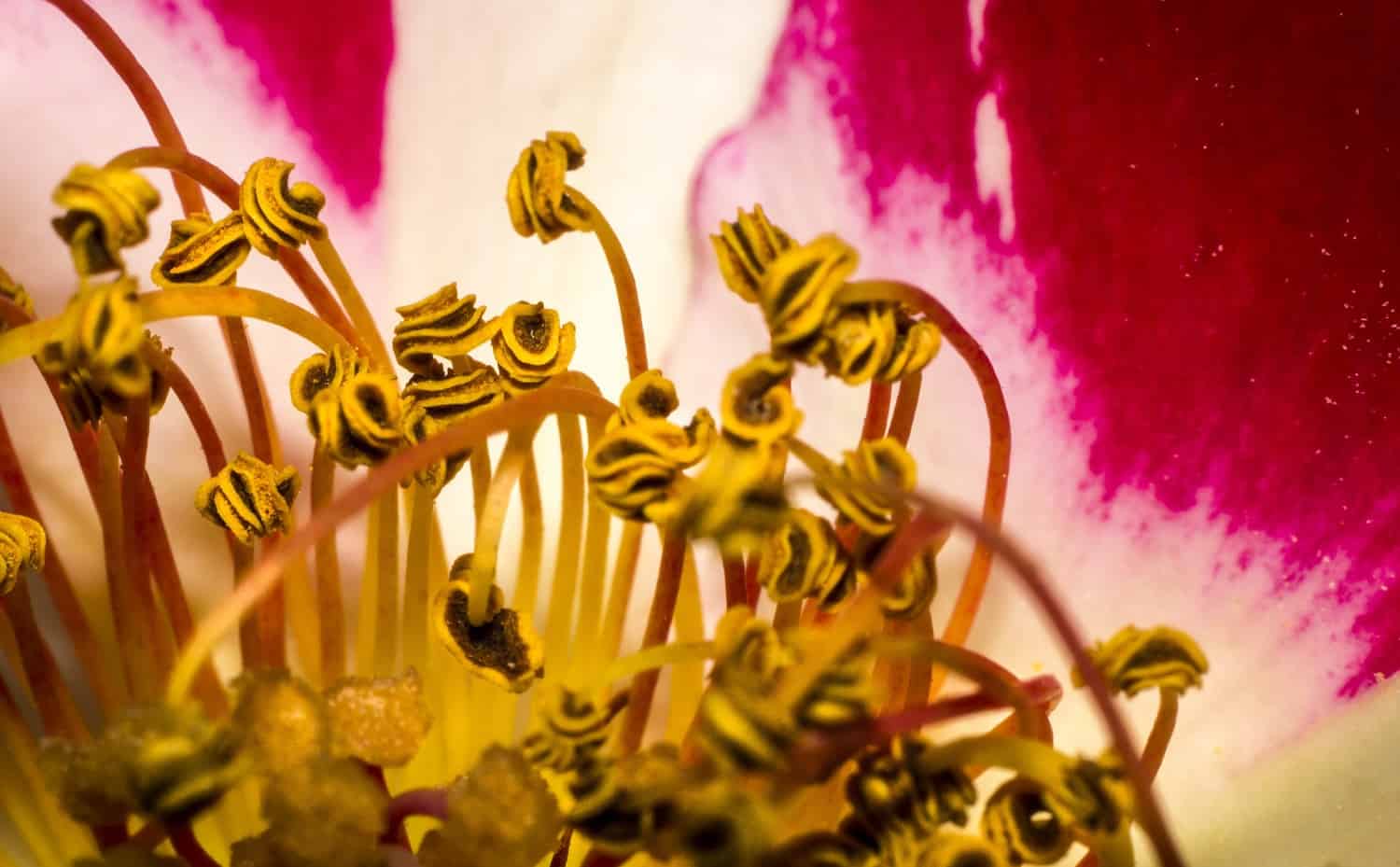
Dance Party—Yellow Stamens, Pink Petals, digital print on archival paper, image size: 10 by 16 inches
Melissa Mohammadi: “I create motherhood-inspired biological impossibilities—succulents growing alongside shade-loving ferns or in the deep sea—in the same way that 17th-century Wunderkammer acted as a microcosm or memory theater. I feel connected both spiritually and physically to my surroundings in nature and the experience of motherhood, which I manifest in lush, inviting spaces.”
Lisa Breslow: “For years I have been painting still lifes of flowers placed on the windowsill of my New York City apartment. I am drawn to the contrast of these simple, quiet compositions and the urban landscape that lies outside my window. The vibrant flower colors—and the way light interacts with them against the muted tonal backgrounds—is endlessly captivating.”
Martin Weinstein: “These paintings are painted on multiple layers of plexiglass over a number of days, or sometimes, years. They are about time and the illusory nature of our experience of reality. To me, flowers are a particularly poignant subject for these themes.”
Linda Stillman: “The ‘August’ Garden Scroll documents one growing season in my garden in upstate New York, from the last frost date in the Spring to the first frost date in the fall, and the process of planting and nurturing the garden. The minutiae of gardening and the process of the art making are recorded in multiple ways with collaged scanned images of the dried plants hanging below the time line and a reflection of their intended color above the line. The scroll also contains the names of flowers, diary entries, a yarn charting my mood, and collaged flower stains, among other details.”
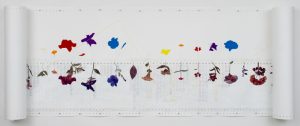
“August'” Garden Scroll (2002-2016), mixed media on paper, 36 inches high; variable depth and length; maximum length 14 feet, 5 inches (installation dimensions in photo: 36 inches high x 9 inches deep x 9 feet long)
Dudley Zopp: “I’m inspired by old-fashioned botanical illustration because the intent there is to understand the patterns of growth of particular species. My studies are both an exploration of watercolor and drawing techniques, and an attempt to get closer to the individuality of a plant. If I can do that without obsessing about an utterly accurate description, then I consider that I’ve learned something that I can incorporate into larger paintings.”
Beverly Rippel: “I often paint out of doors in my ‘Big Sky Studio,’ in plein-air fashion, though I allow for the influence of sky, sun, wind, even fragrance to become involved in the paint interpretation. The first of these paintings is of my niece’s wedding bouquet, which she gave to me that evening. (When the impasto was dry, I delivered the painting to her and husband as a wedding gift.)”
Heidi Jung: “From trees and plants to flowers, cacti, and seaweed, I’m continually inspired by the natural world. I first started painting plants and flowers after a lengthy focus on insects. With their common tendrils and textures, botanical imagery flowed easily as a next series, one that I’m still exploring to this day.”
Top: Elisabeth Condon, Pecking Order (2017), ink, acrylic, pumice, glitter on linen, 47 by 151 inches
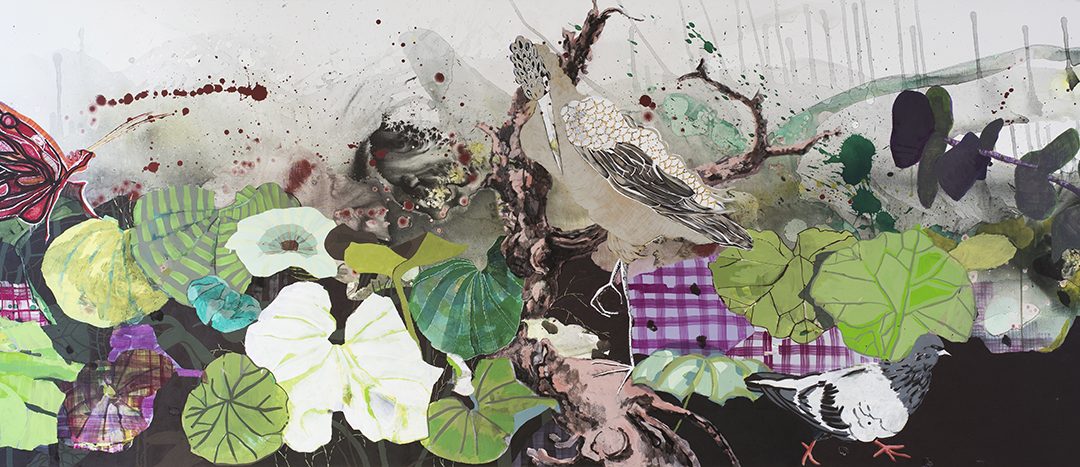
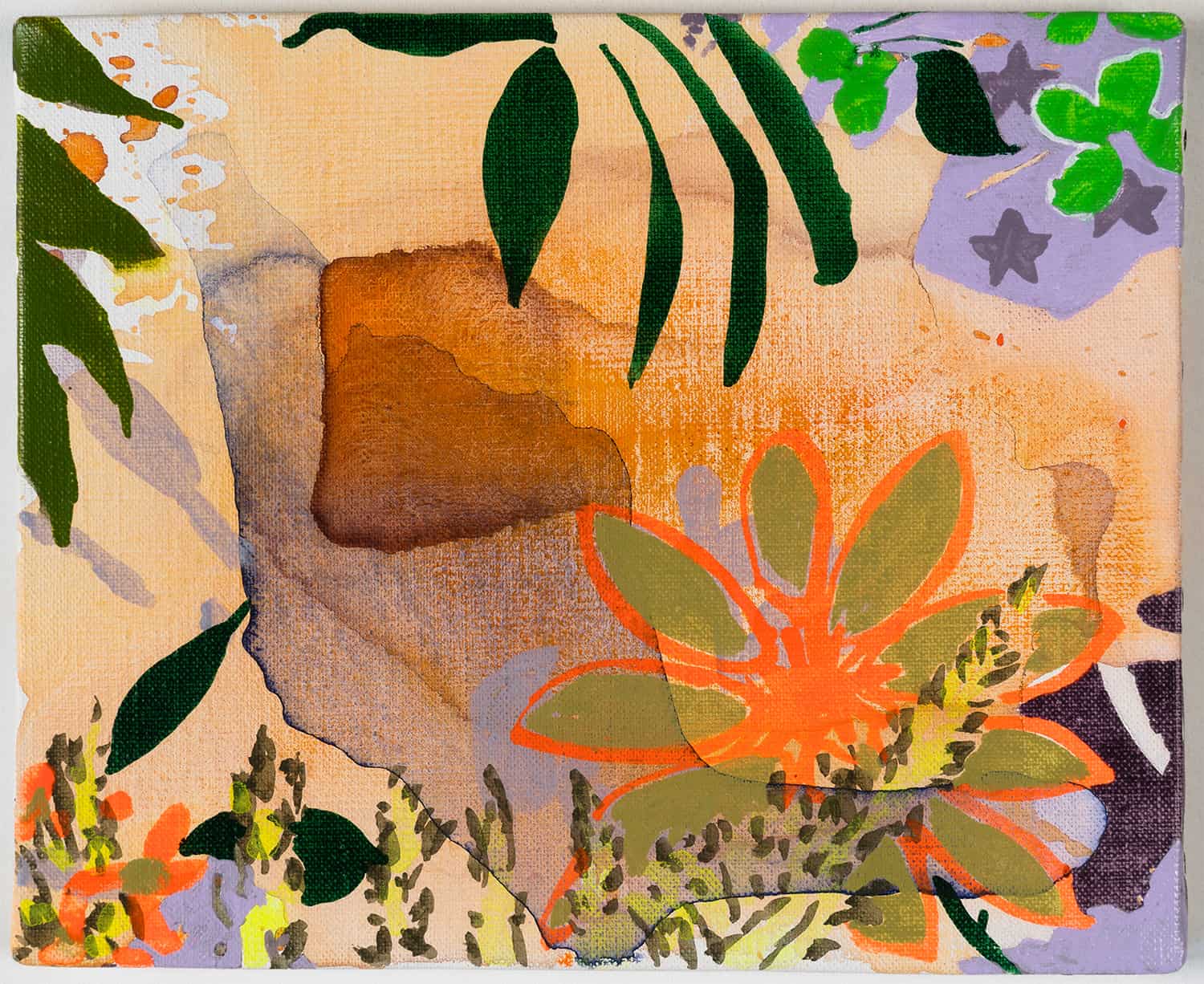
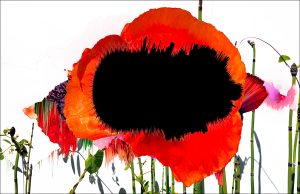
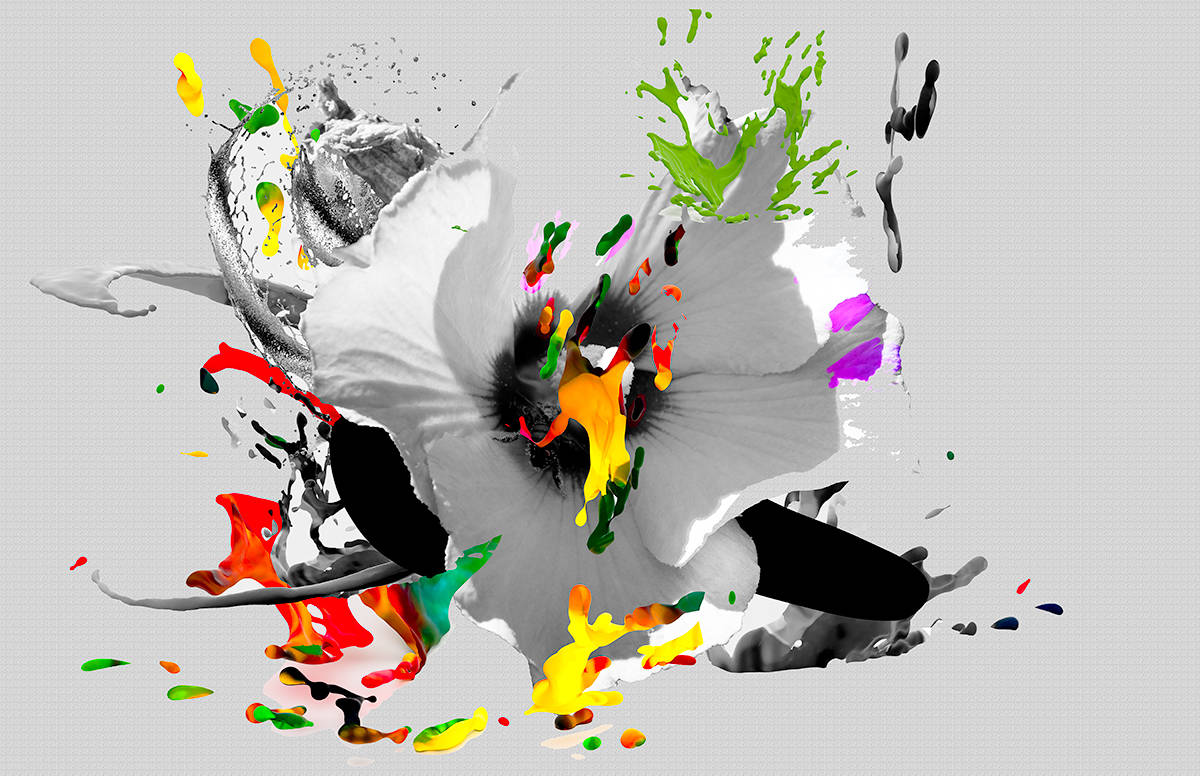
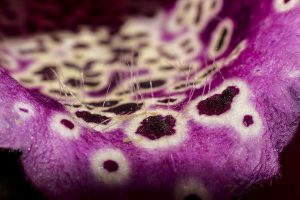
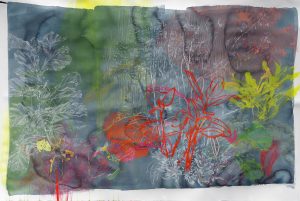
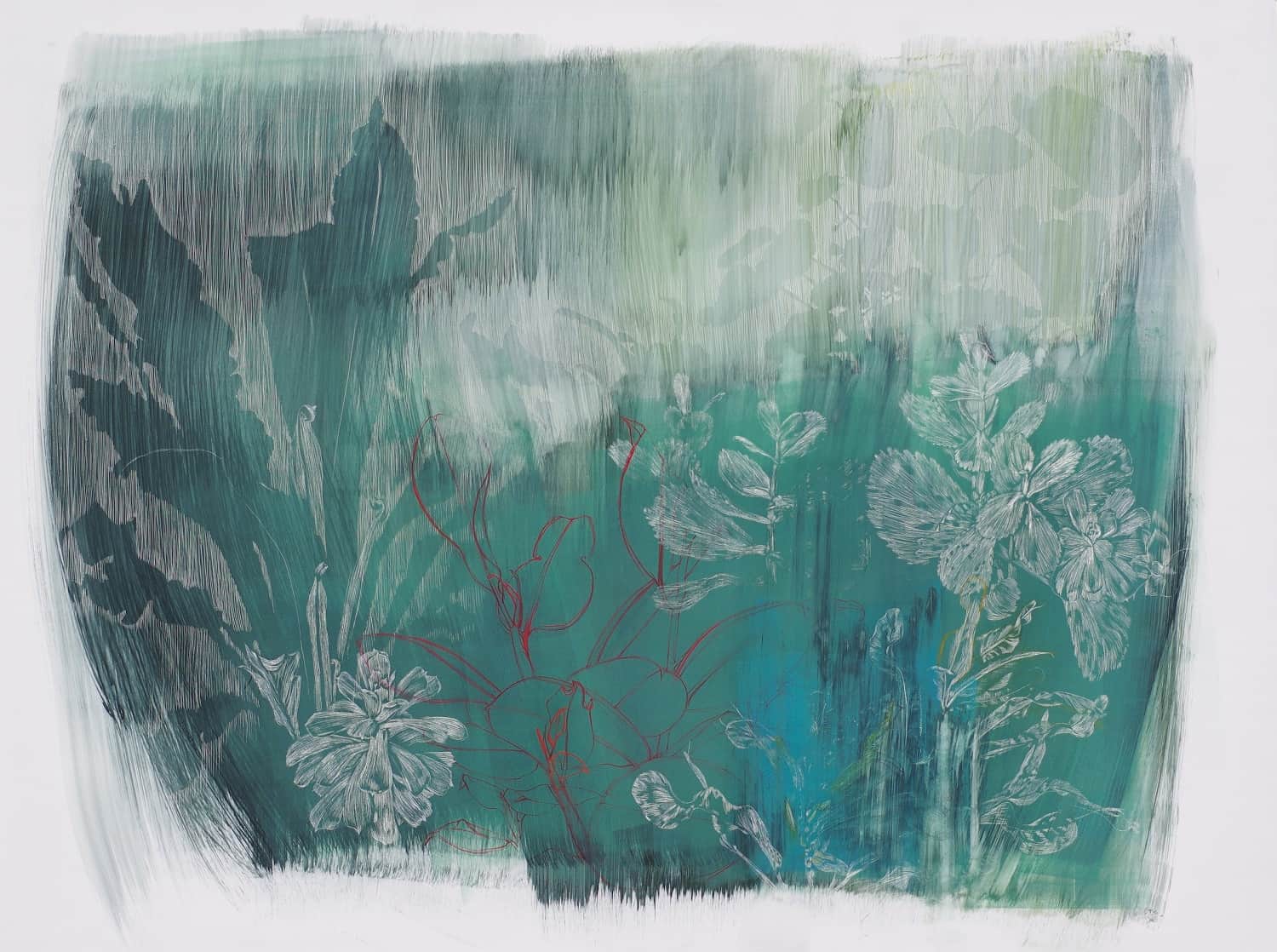
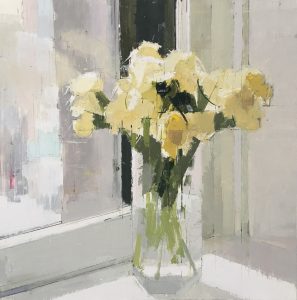
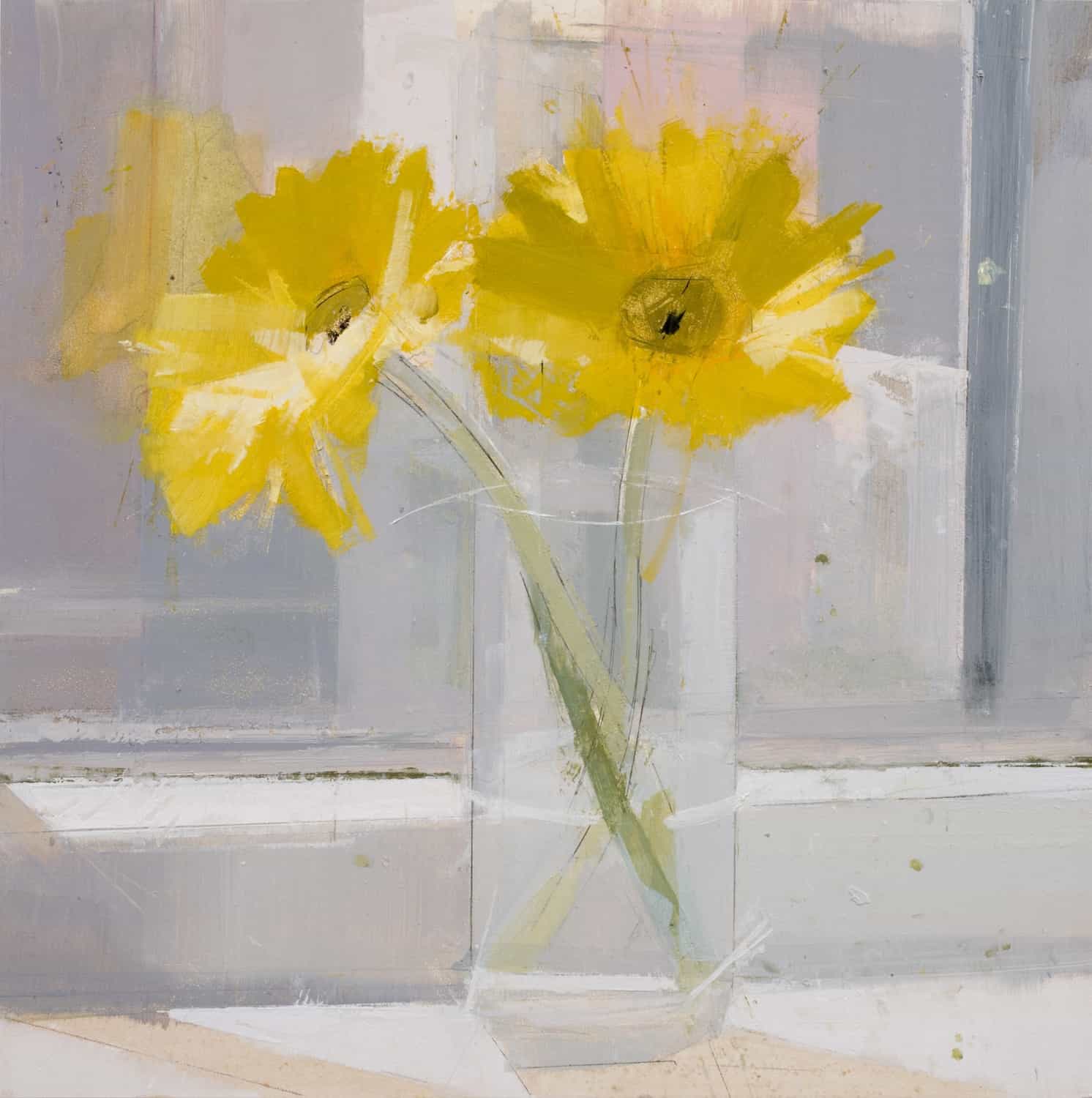
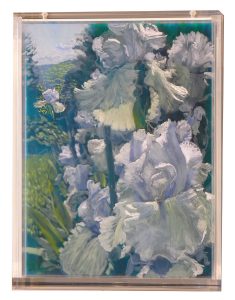
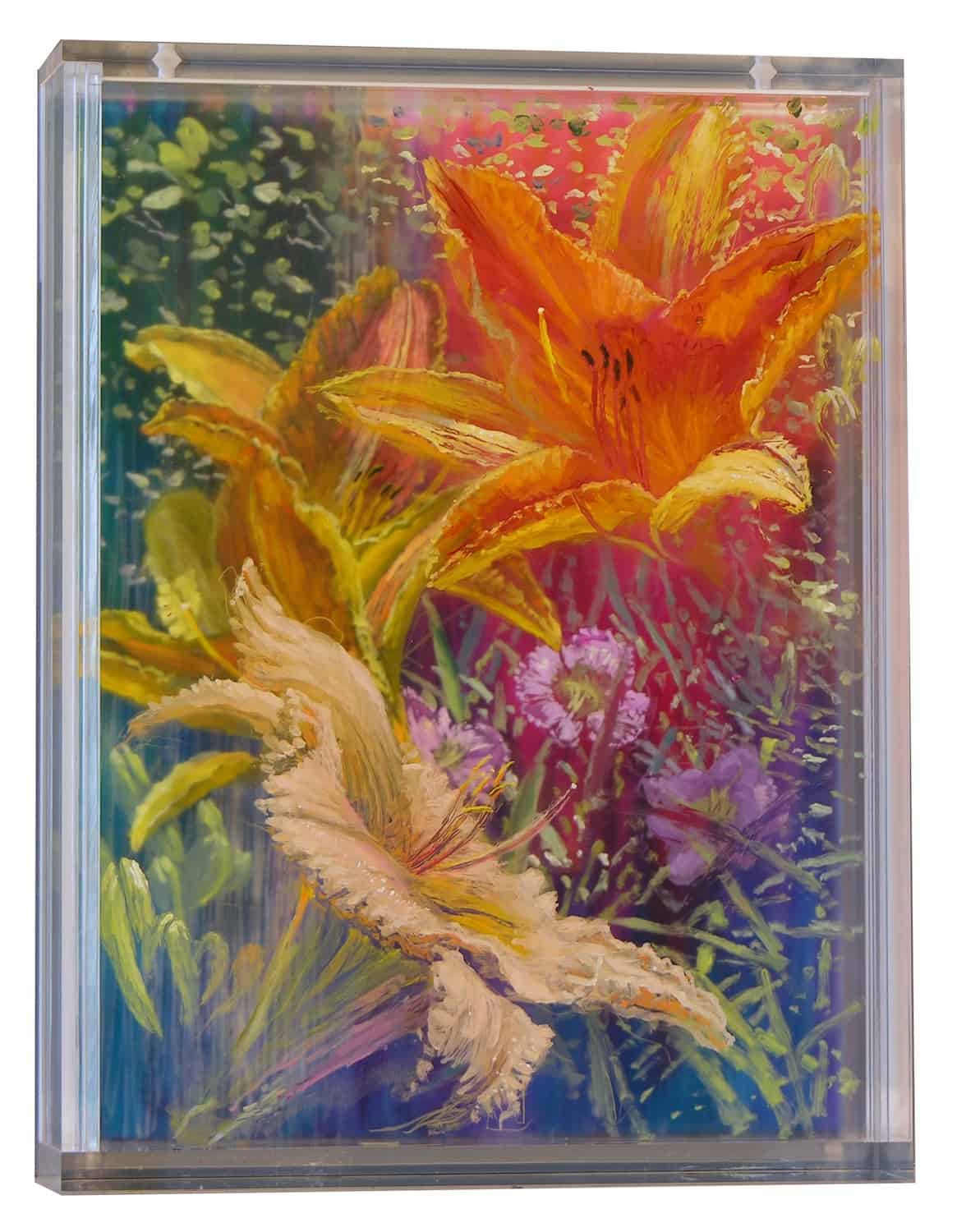
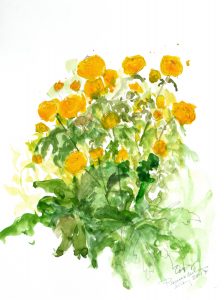
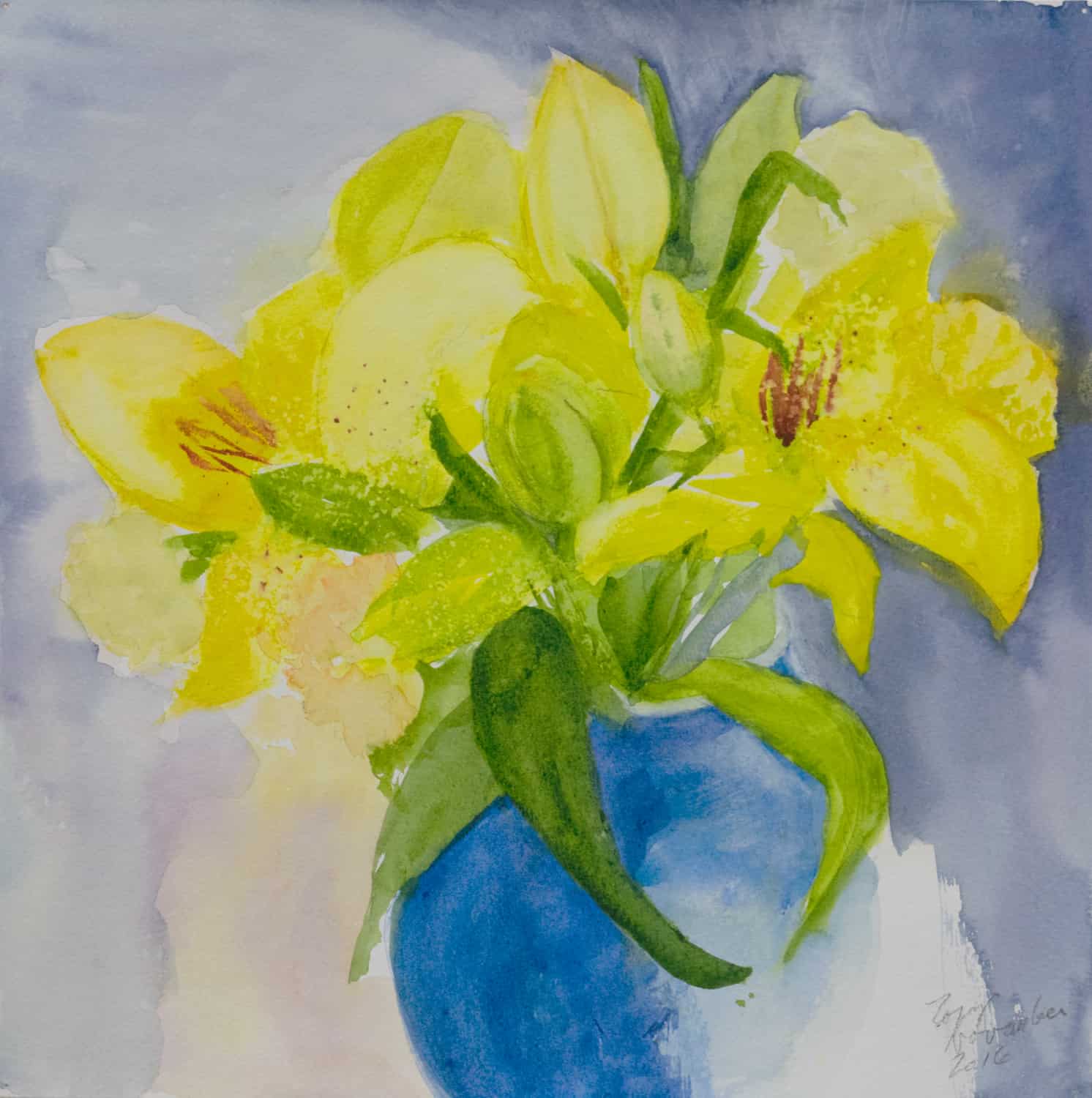
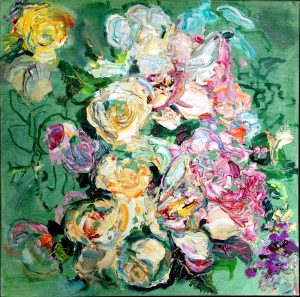
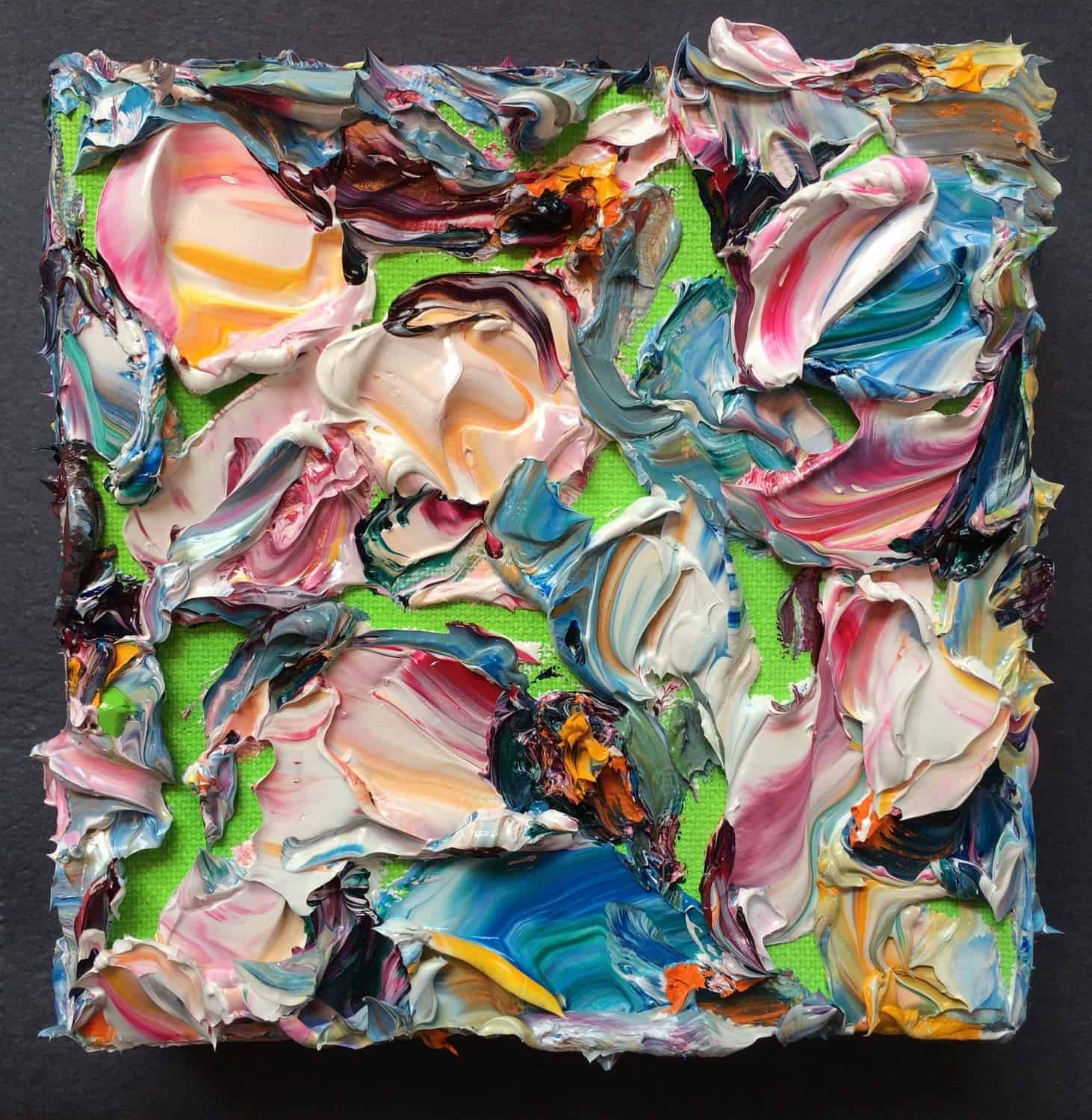
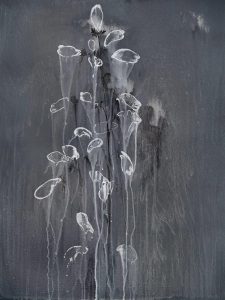
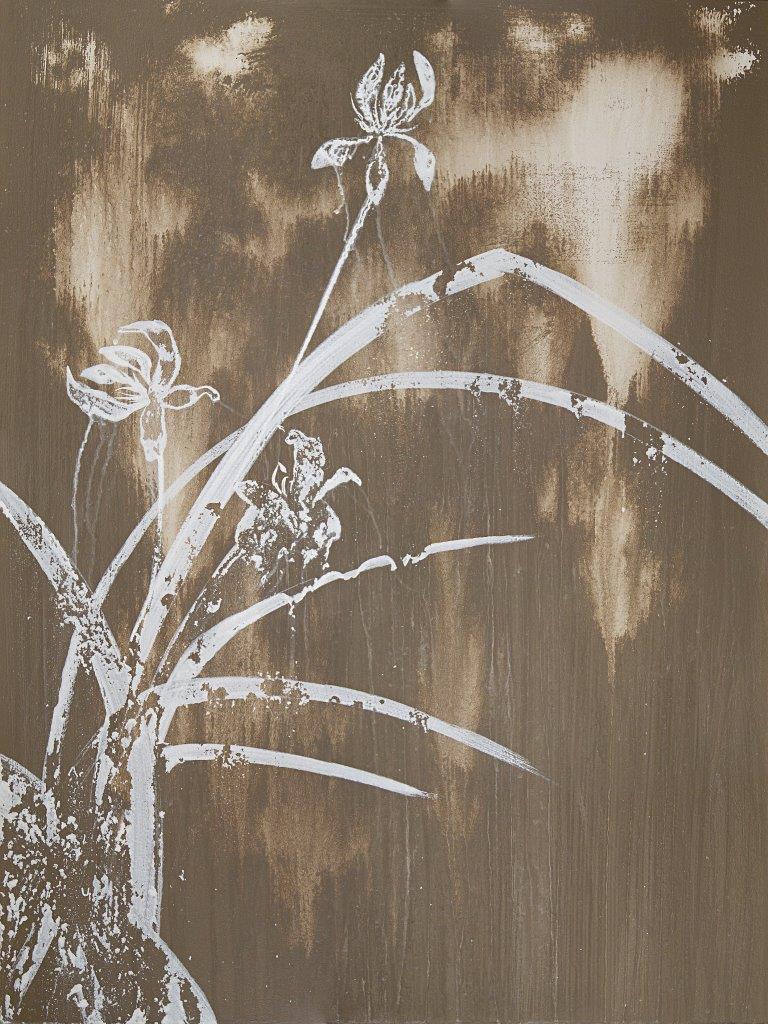
Thanks Ann. So great to see that we are a cohort!
I especially like Lisa Breslow’s paintings. Thanks Ann for giving all these artist a forum.
Such beautiful interpretations, especially fascinated by Linda Stillman’s “Garden Scroll”
Thanks for an engaging article, all wonderful artists and an underrated subject if you ask me.Flower paintings have gotten a bad rap over the years and deserve the attention.